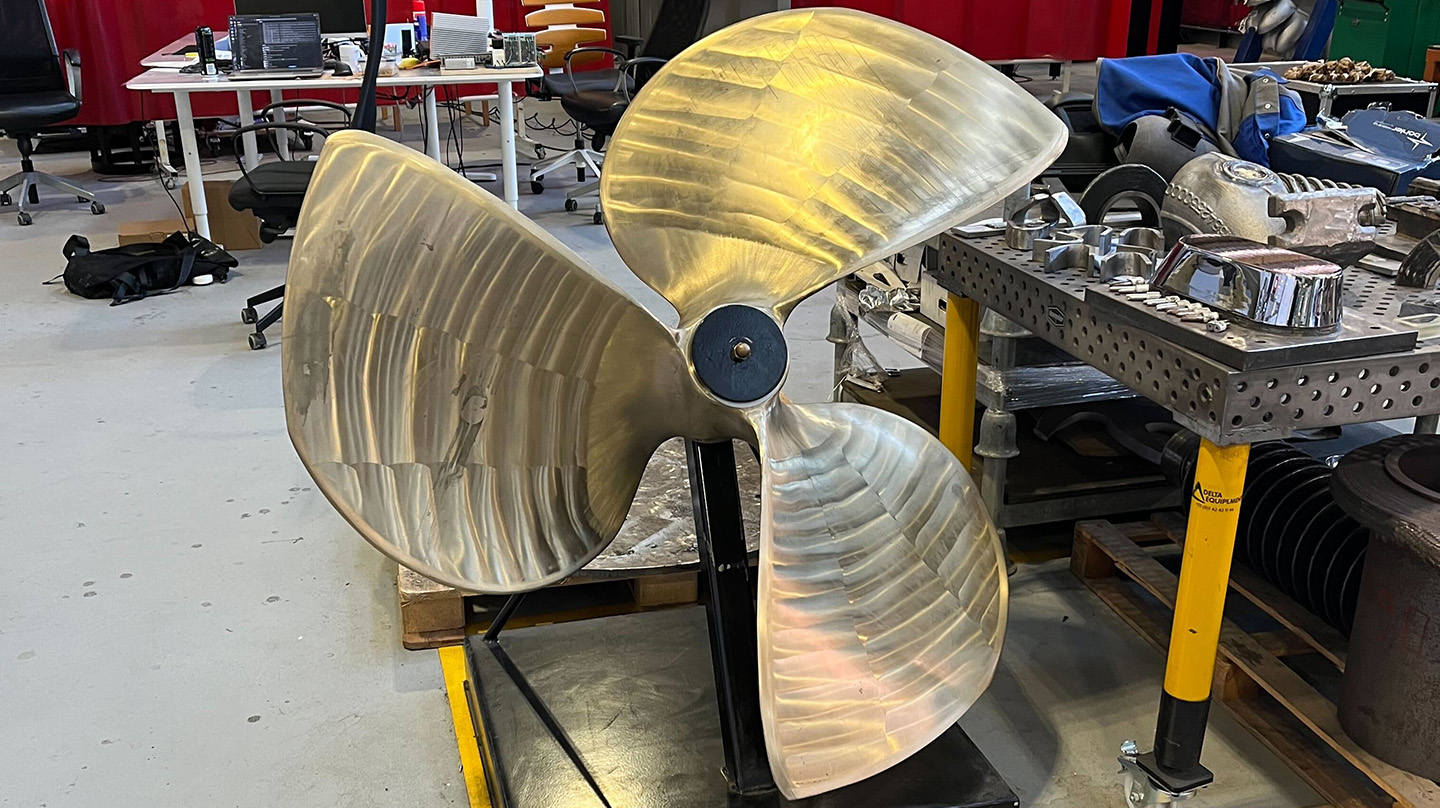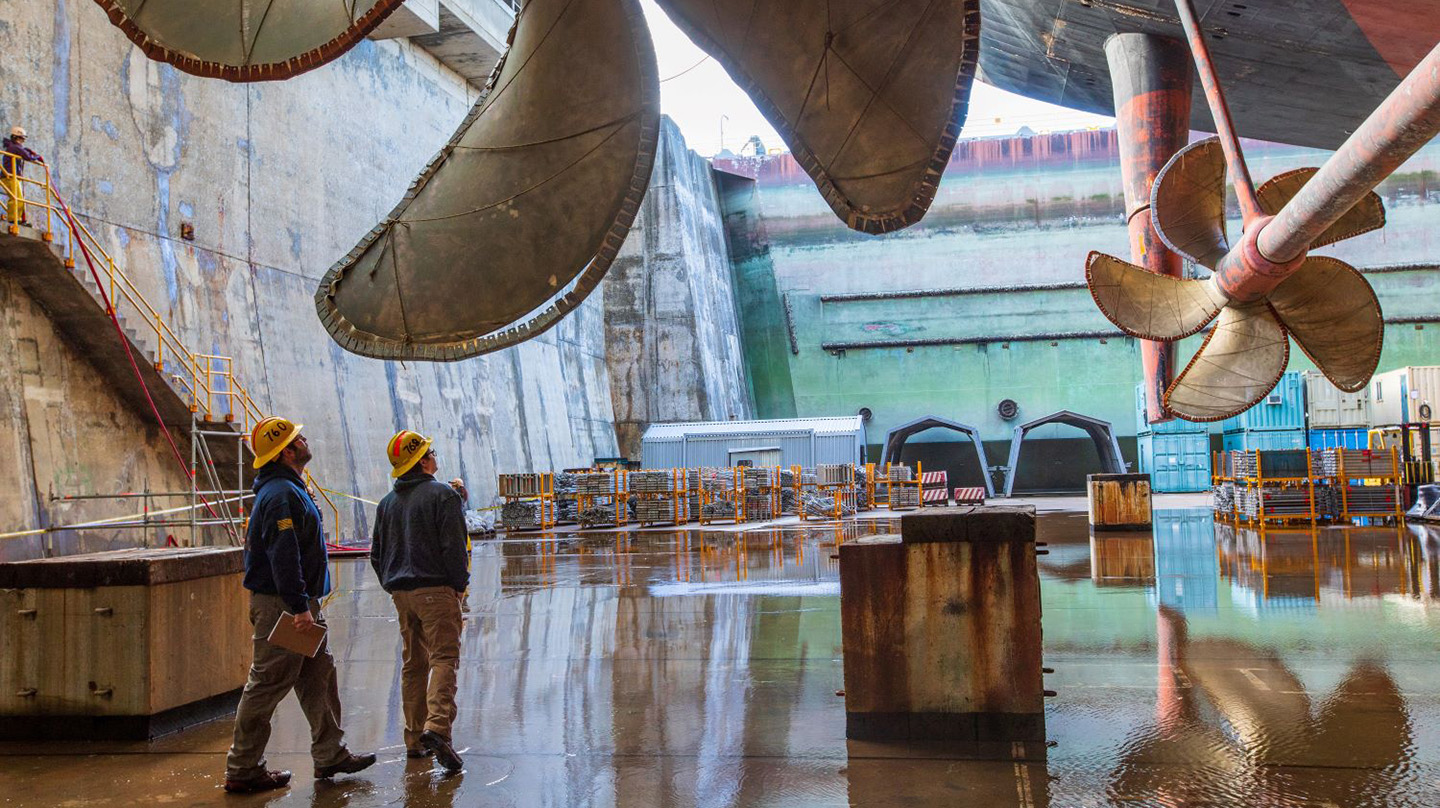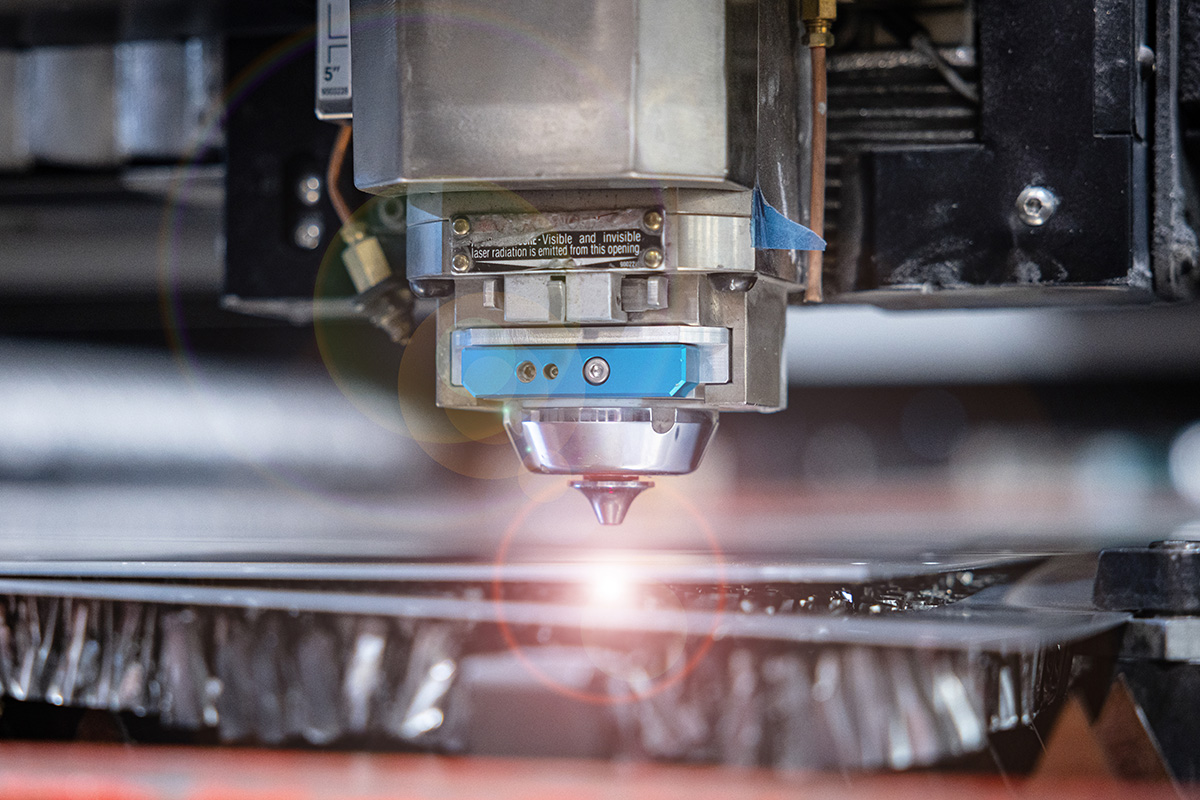Press Release
New Robotic Arm Opens Doors to Explore Future of Maritime Repair
Audio generated using AI voice technology.

Credit: Johns Hopkins APL
To enable research into strengthening the nation’s maritime industrial base, the Johns Hopkins Applied Physics Laboratory (APL) in Laurel, Maryland, has installed a new industrial robotic arm in its advanced manufacturing facility. The device, a RAMLAB MaxQ robot, will be used to study, test and validate repair and manufacturing approaches, with the aim to identify how best to deploy these capabilities to small business and industry partners.
“Repair is a difficult challenge to solve in maritime sustainment, but it’s critical we do so because it is often faster than building parts from scratch,” said James Borghardt, APL’s Expeditionary Logistics program manager. “With this new tool, APL can validate and refine additive manufacturing techniques that make repair more practical for our government and industry partners, and ultimately improve the agility and resiliency of the maritime industrial base.”
This work builds on APL’s efforts to support and improve the U.S. maritime industrial base through several programs and projects, including deployable directed energy deposition, adoption of laser powder bed fusion, materials discovery for national security, and collaboration with industry to refine advanced manufacturing tools and standards.
Traditionally, building or repairing large maritime parts such as propellers requires custom molds and expensive assembly-line infrastructure, which entails a significant investment for many small suppliers. By enabling large-format builds without extensive fixturing, however, this new system could help expand supplier participation and diversify the defense industrial base by being more accessible to small businesses.

Credit: Johns Hopkins APL/Clinton Bettner
The APL team is researching and developing new repair and manufacturing capabilities for the maritime industry, both military and civilian. With a 6-foot radius and large build volume, the robotic arm can operate in a relatively small space to maneuver large-scale structural and mechanical parts. The system leverages wire arc additive manufacturing, a trusted welding process that uses lower-cost wire feedstock. This reduces barriers for small businesses while enabling efficient repair and production of large equipment and hardware.
Integrated sensing, scanning and adaptive controls allow the arm to identify issues in large, irregular or damaged parts while also helping the system develop pathways to repair on its own. However, human expertise remains critical as the technology evolves. APL researchers will run simulations ahead of builds to ensure the robotic arm doesn’t attempt maneuvers beyond its physical limits, and operators will stay in the loop to guide processes and finish parts to maintain precision and reliability.
“These capabilities allow us to make repairs that are smarter, more precise and significantly faster,” said Carly Mayhood, a maritime engineer and project manager at APL. “Through our research, we’ll continue to refine and inform the repair and manufacturing processes, and reduce the Navy’s reliance on costly disassembly or replacement parts while keeping ships mission-ready with less downtime.”

